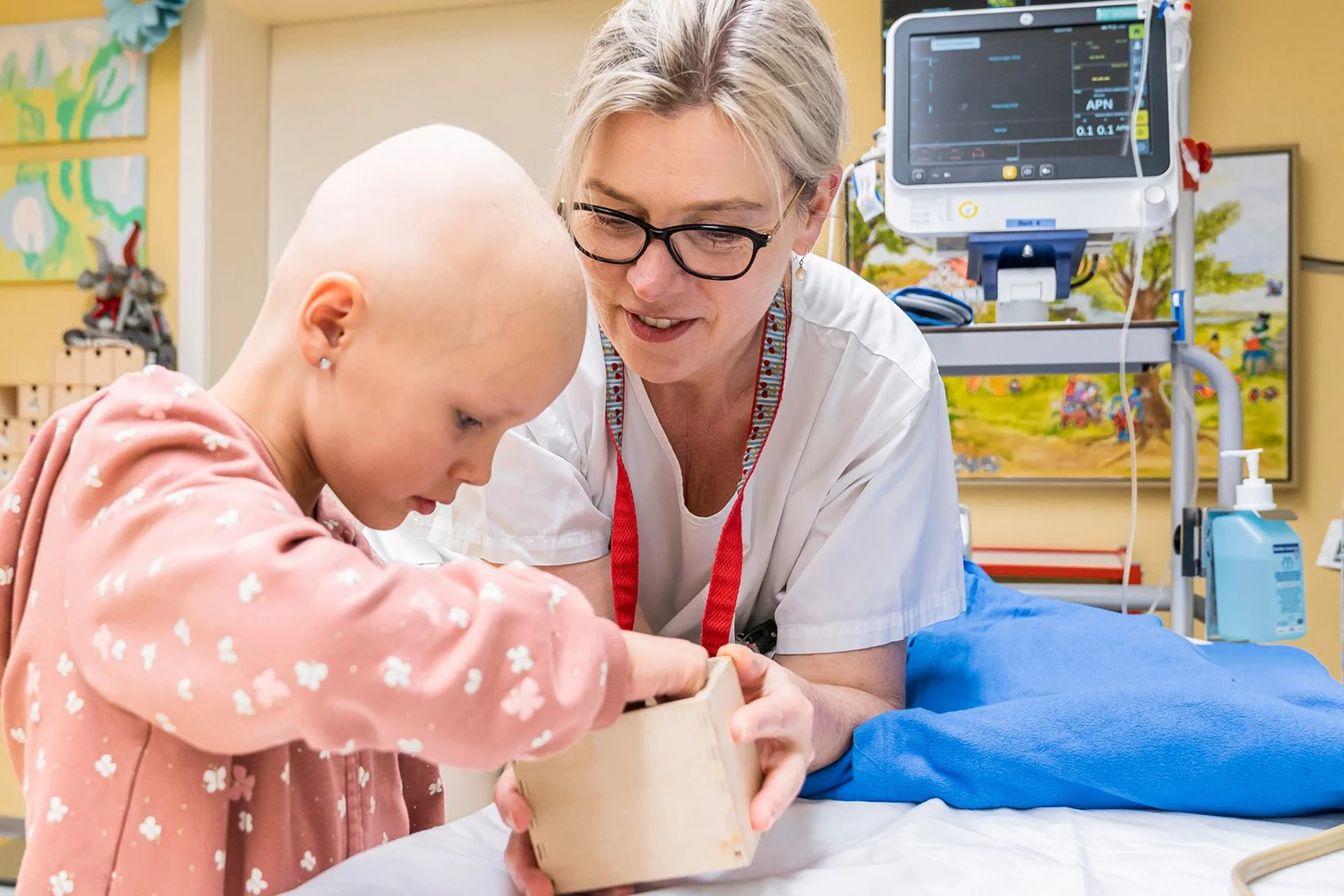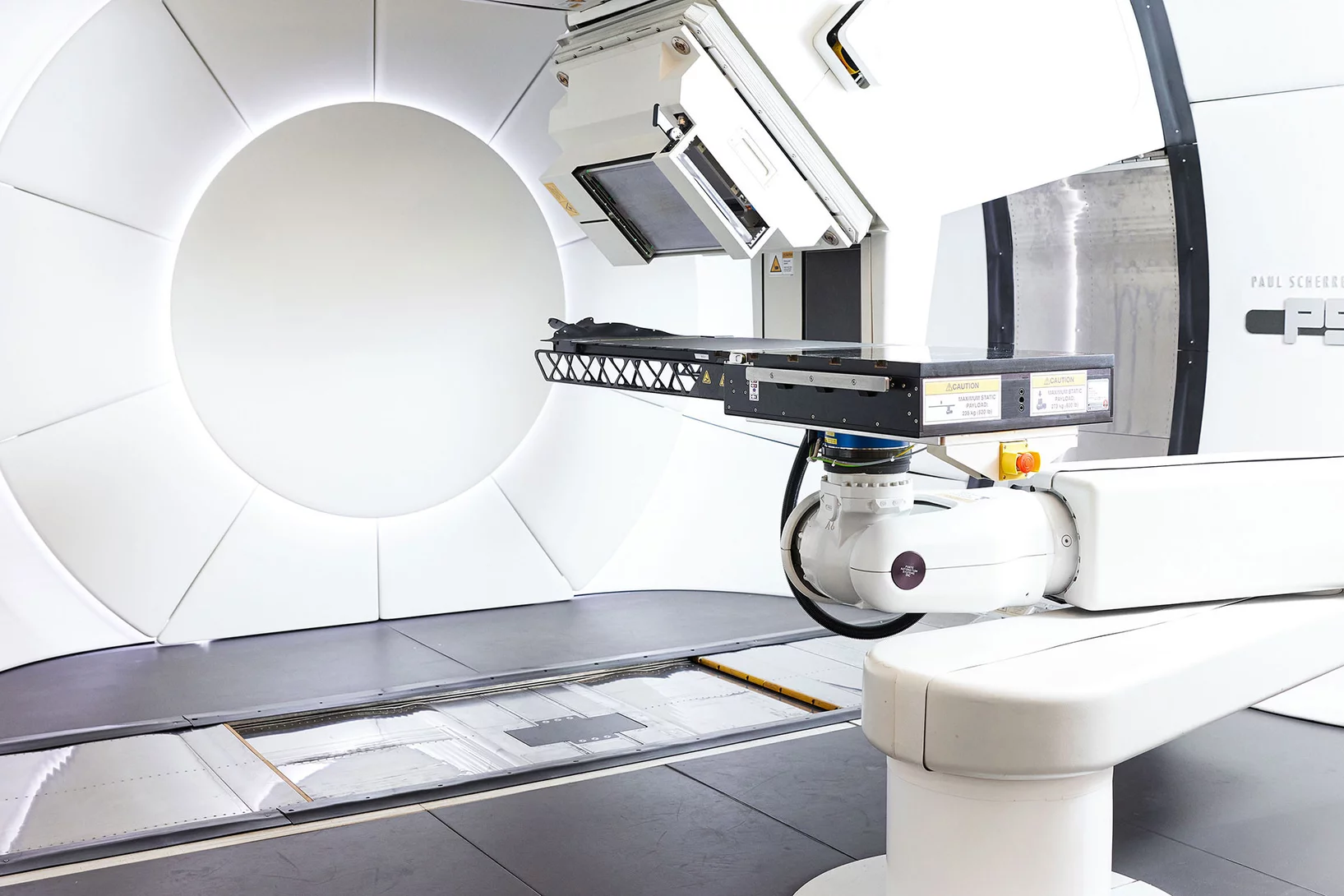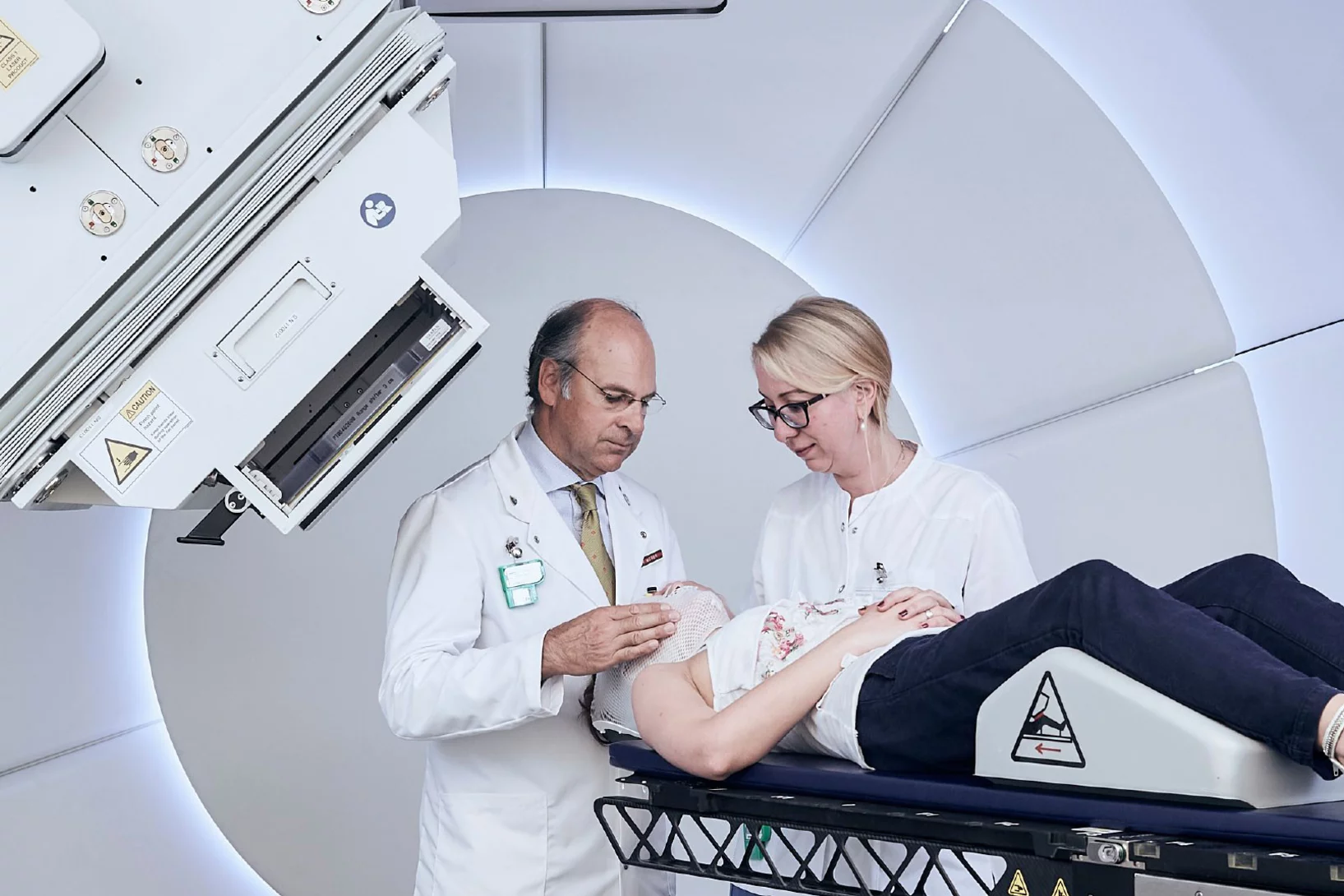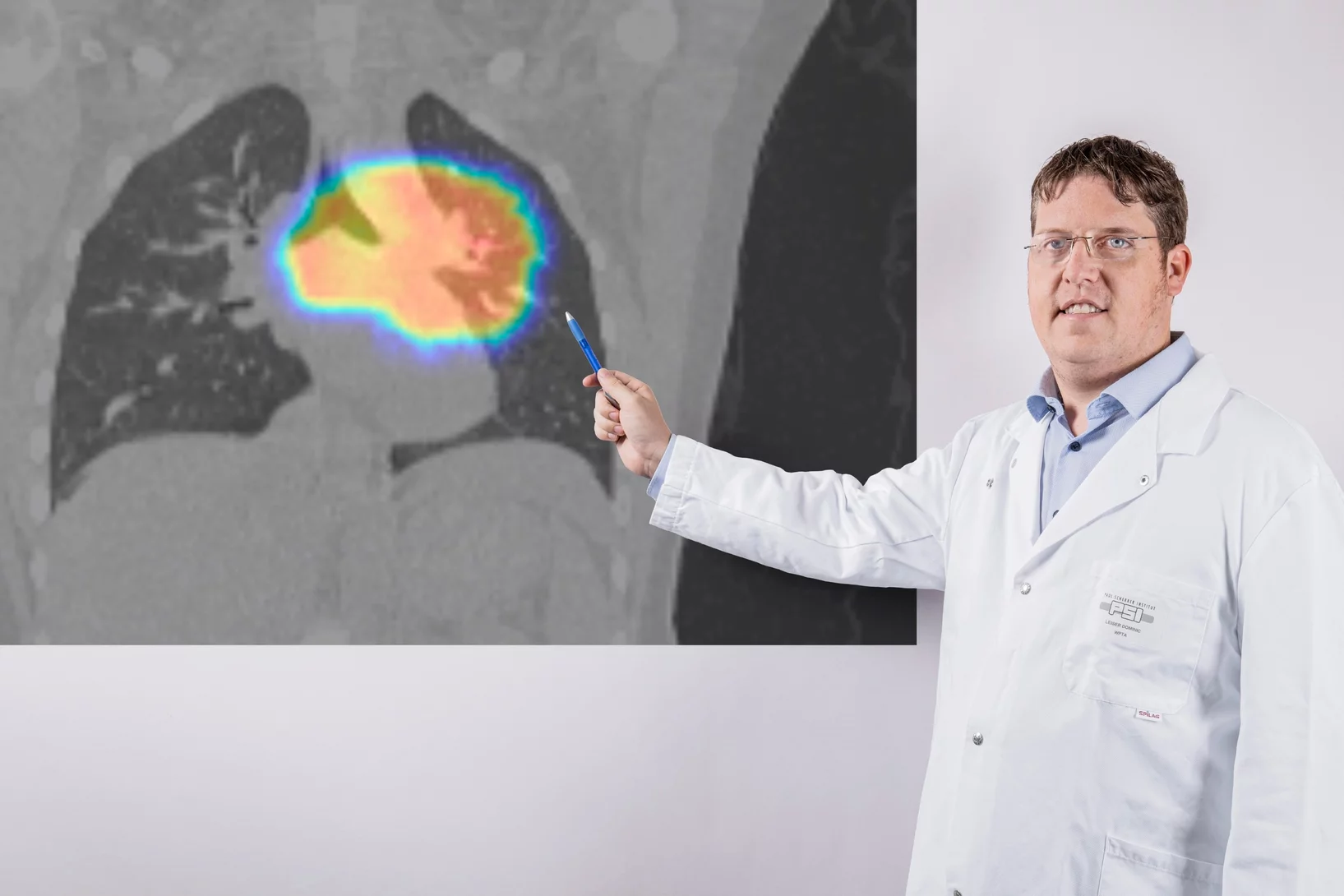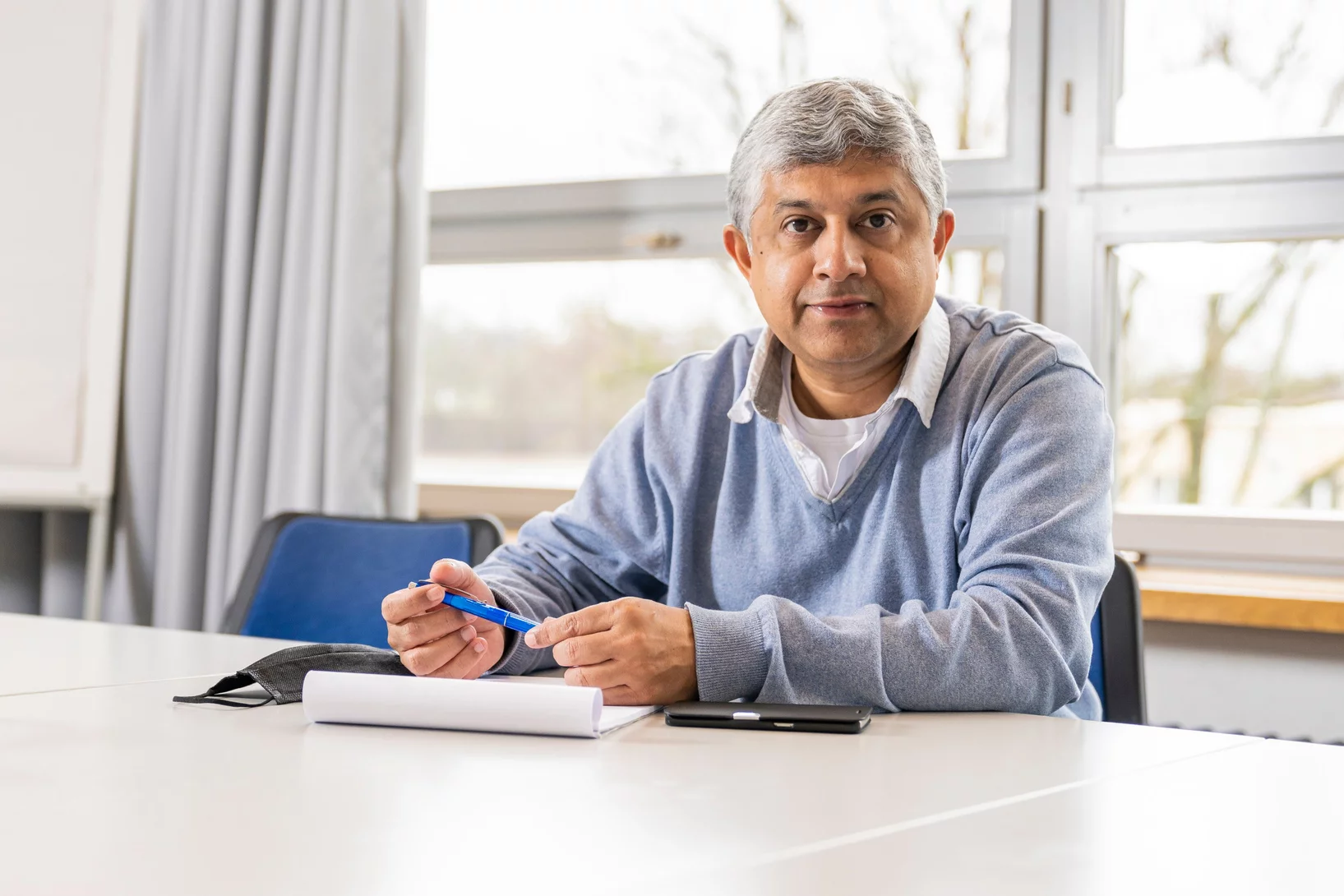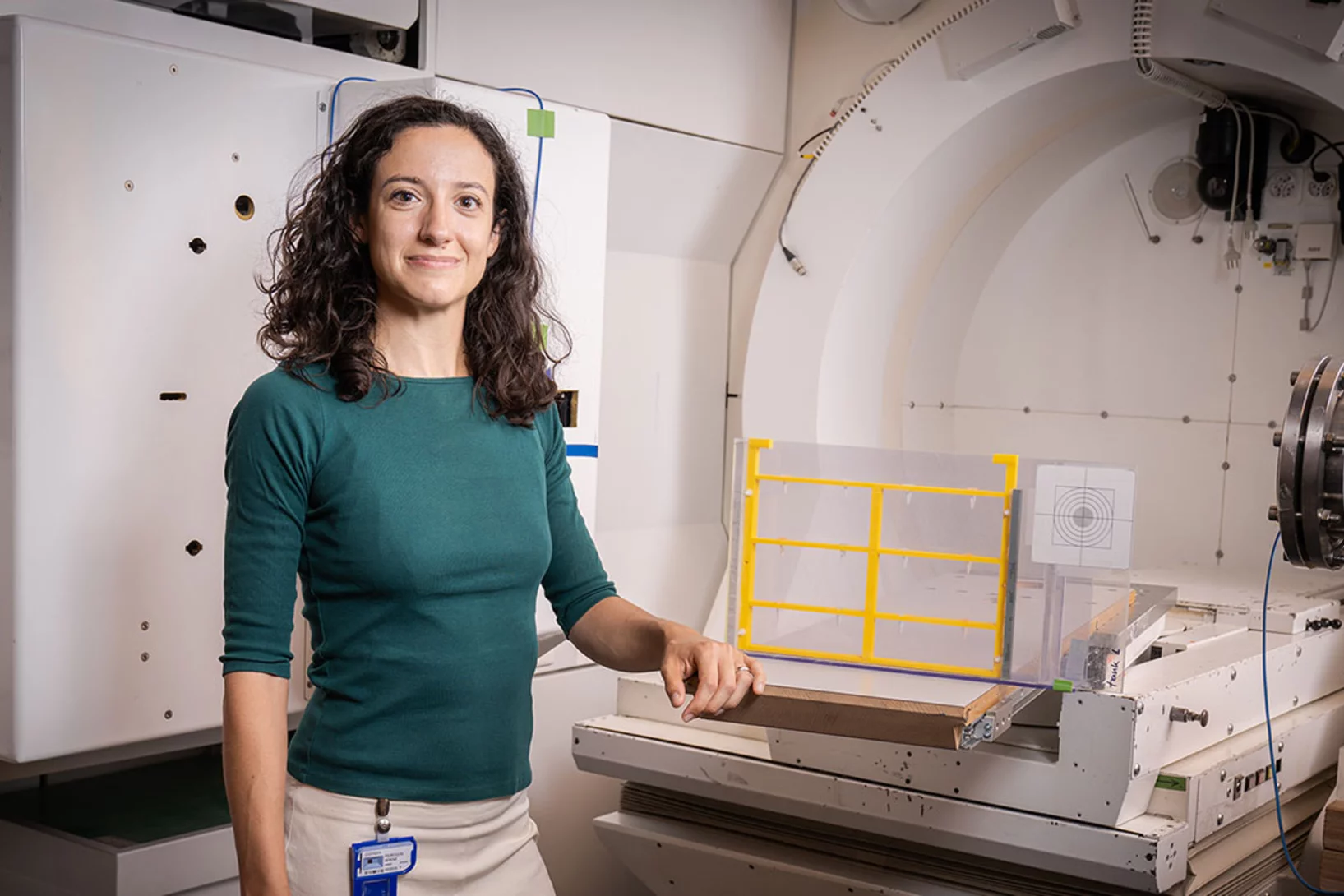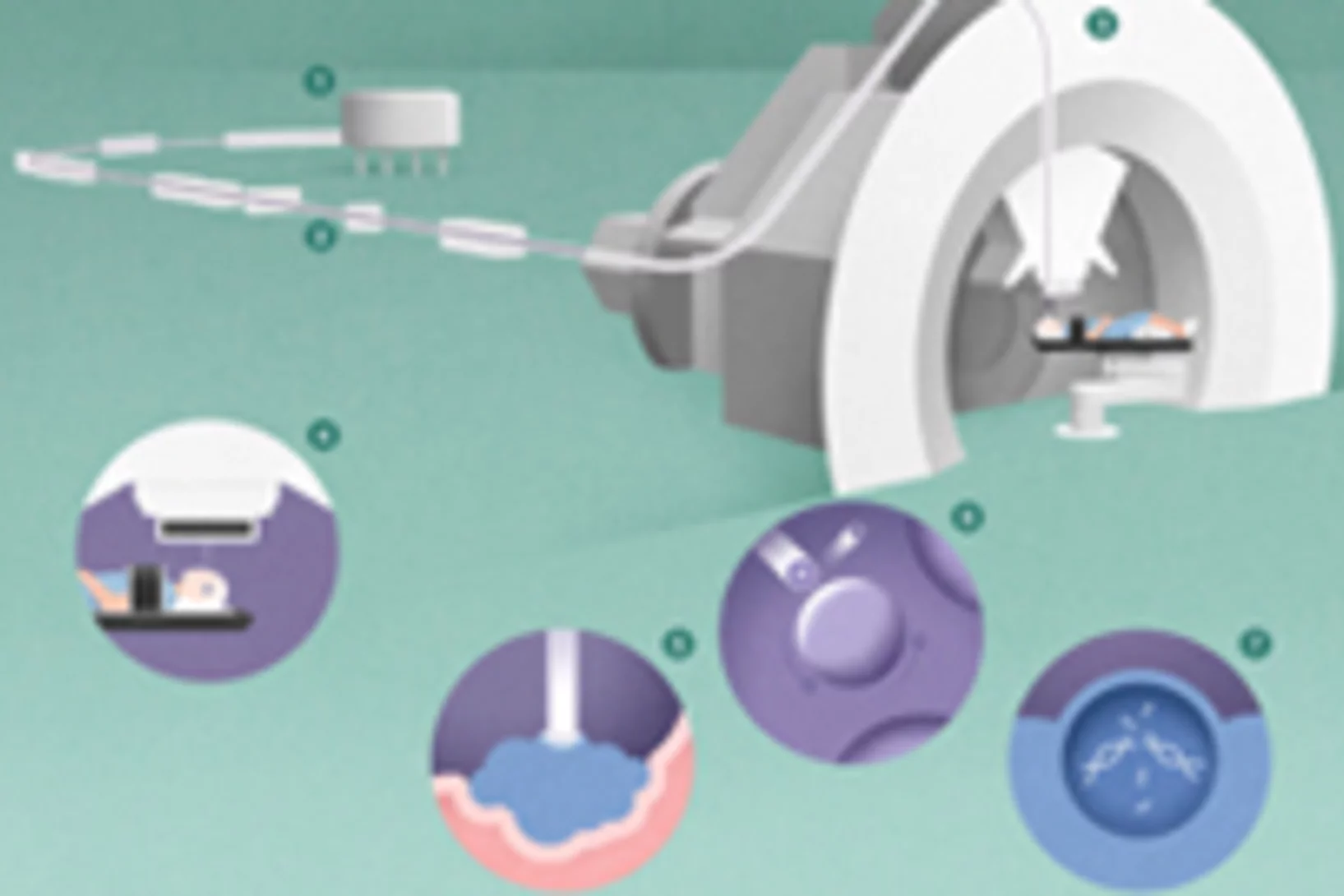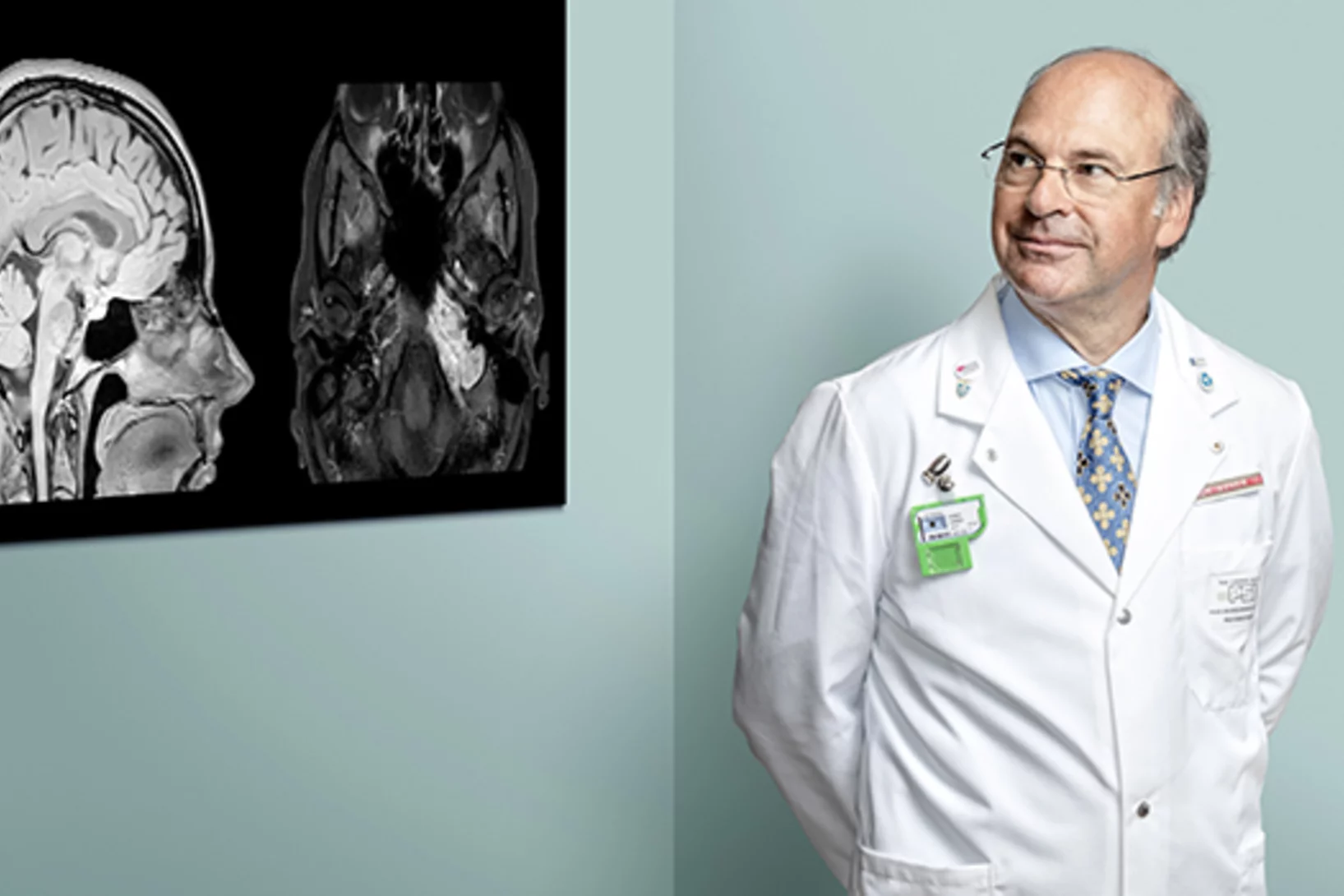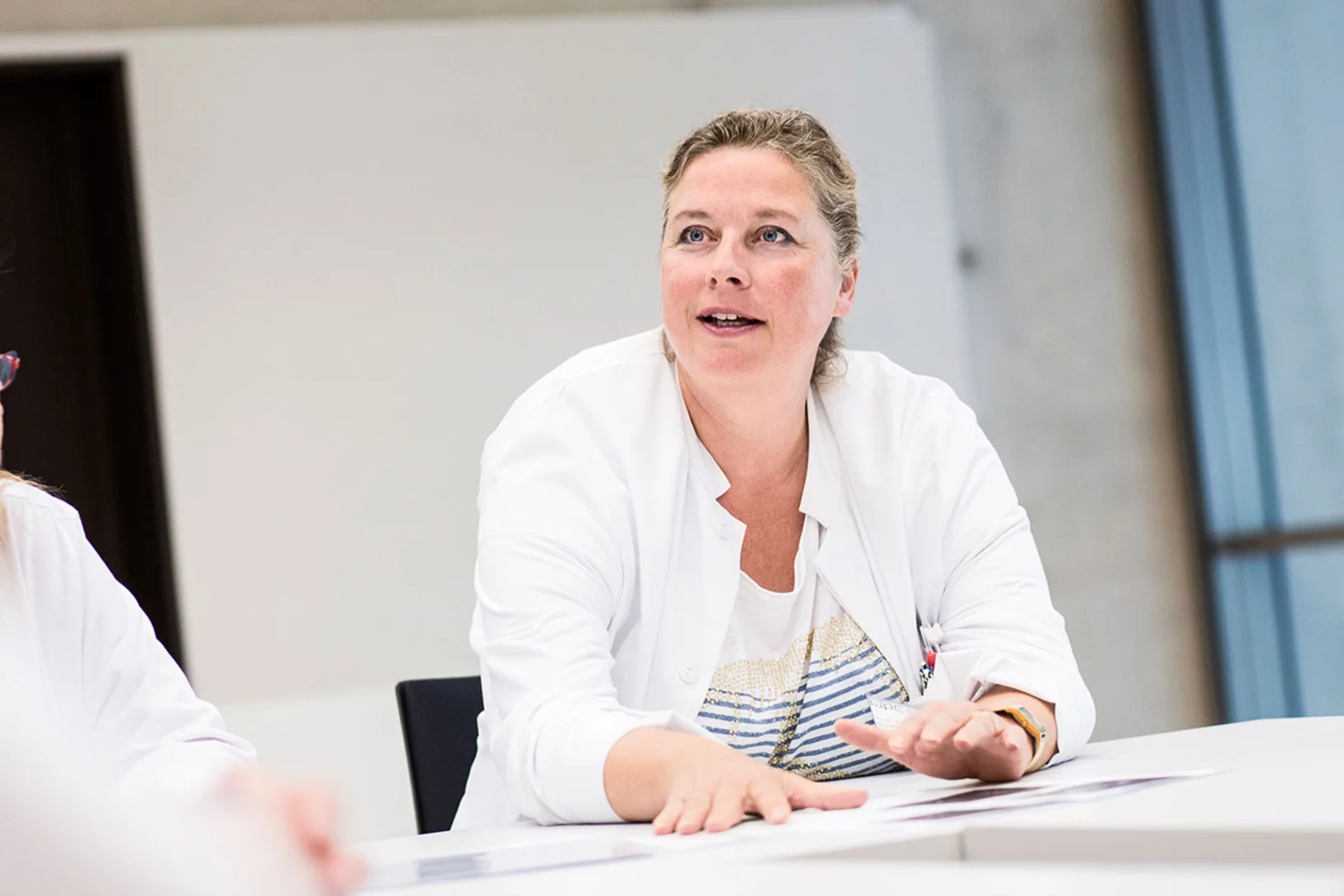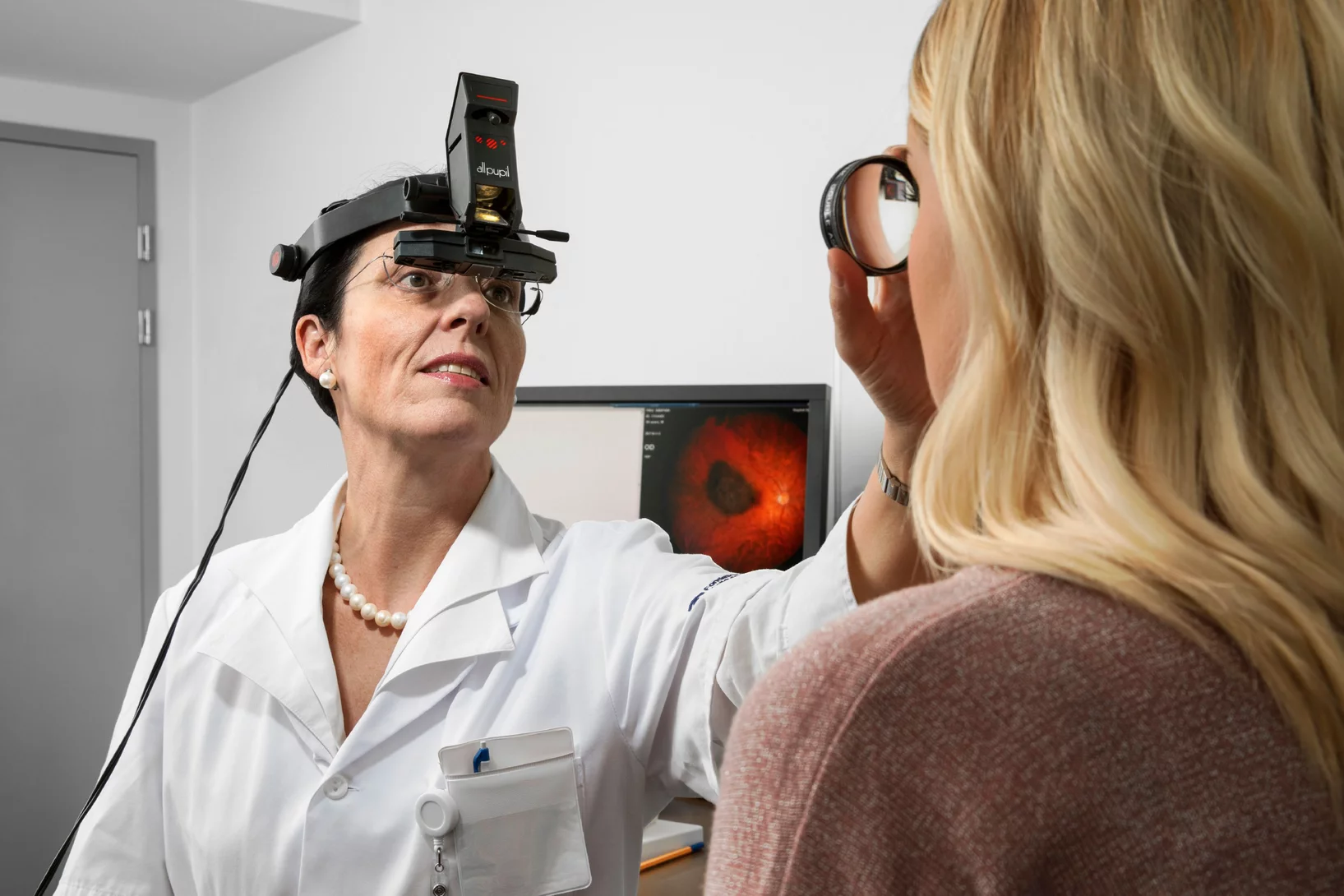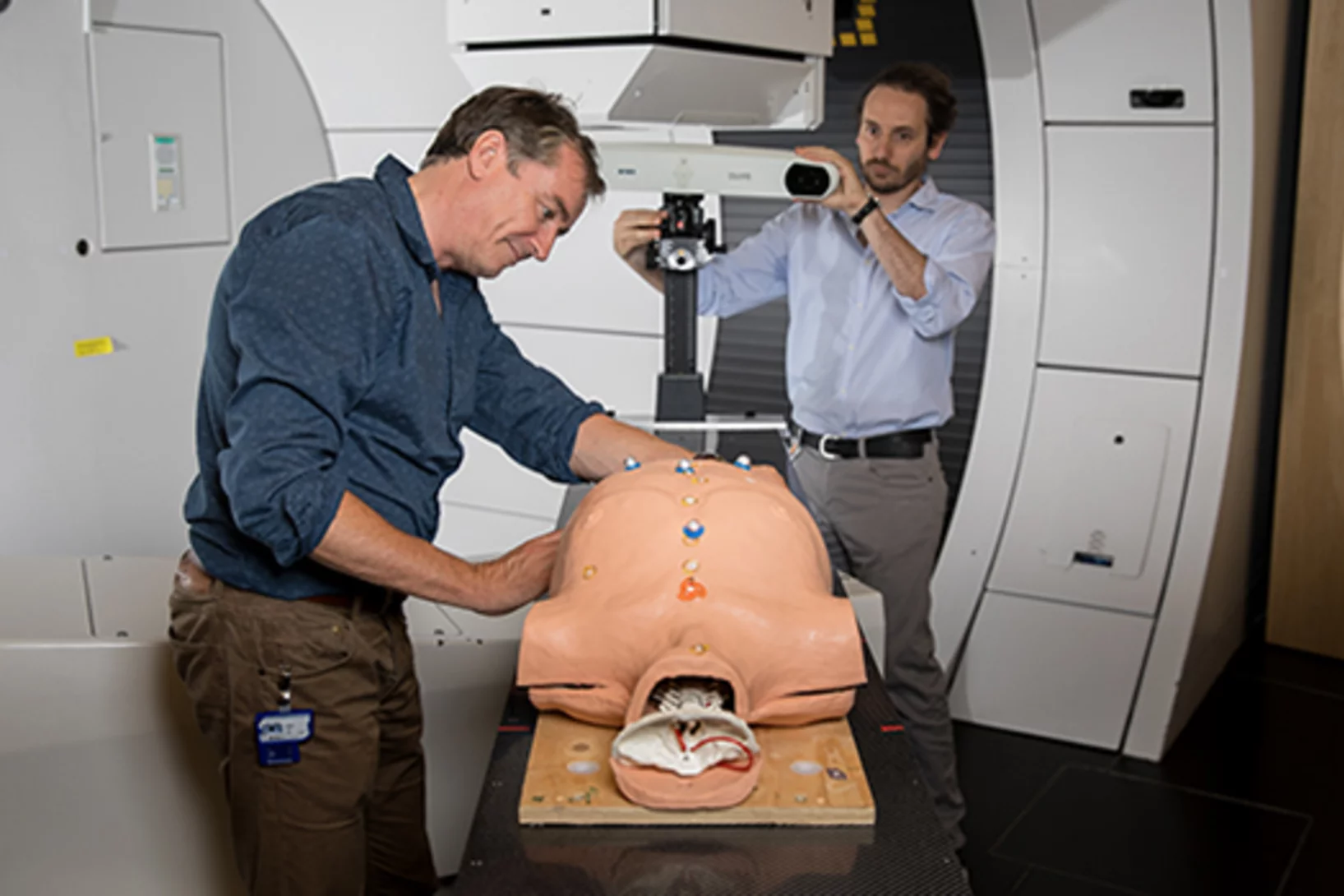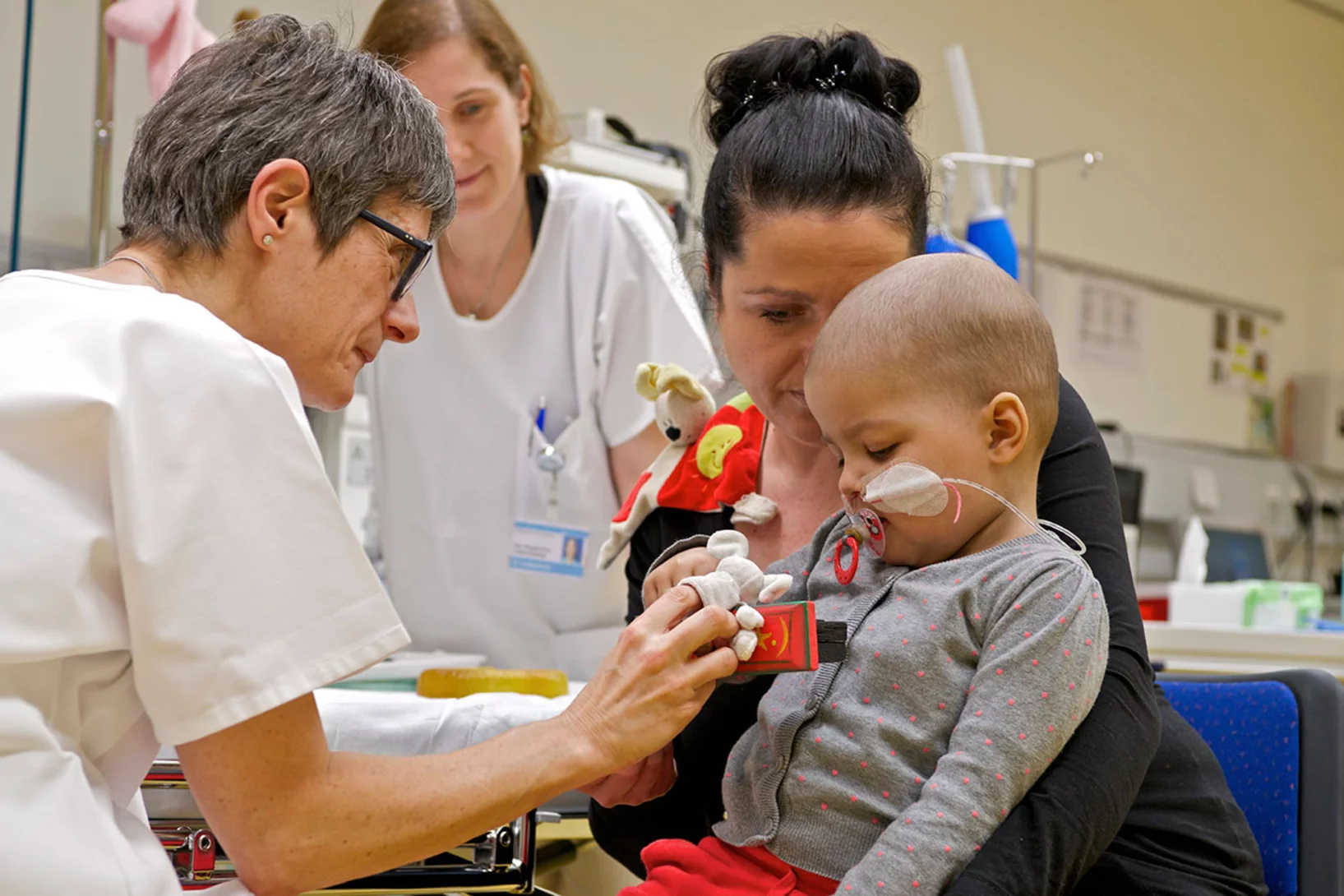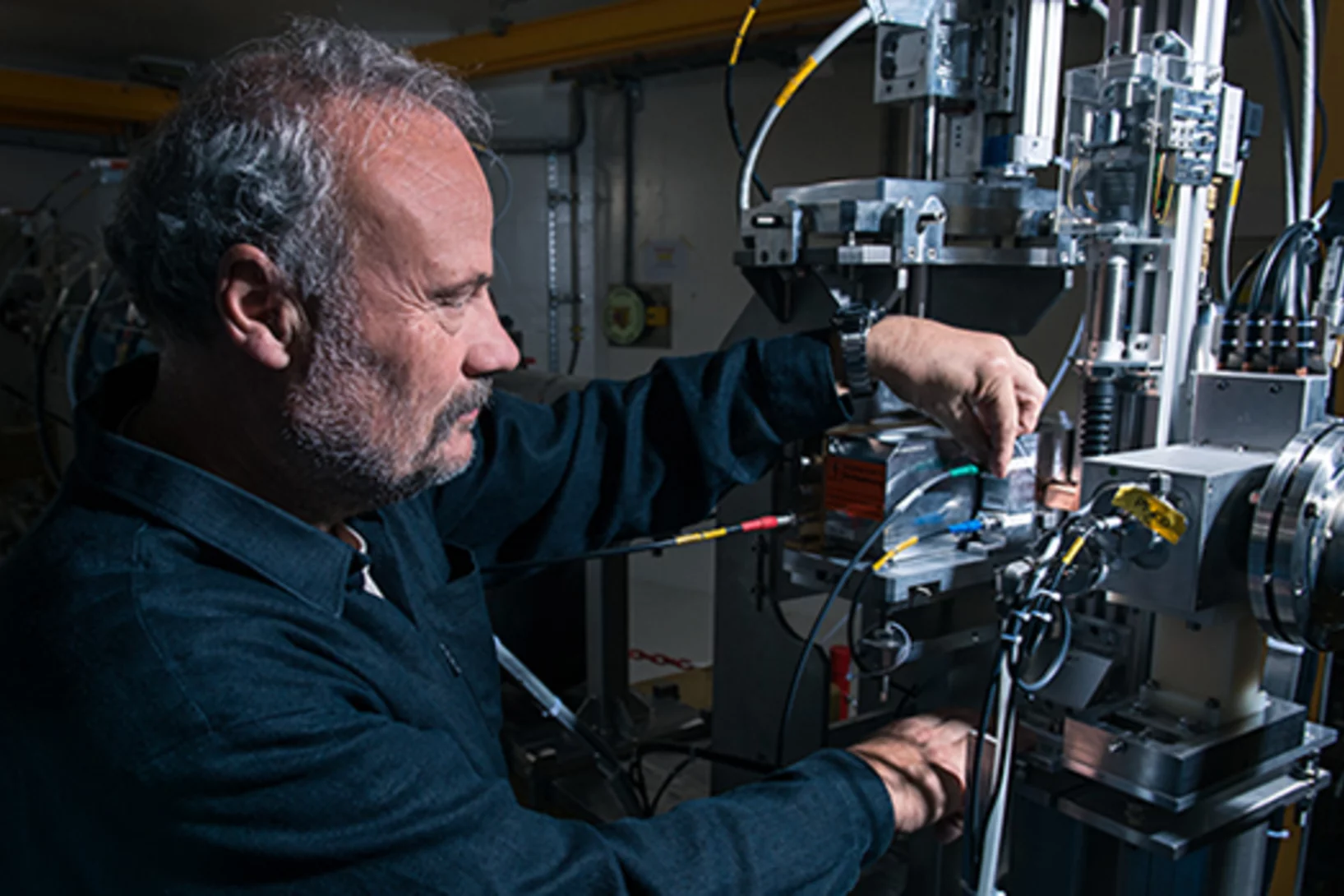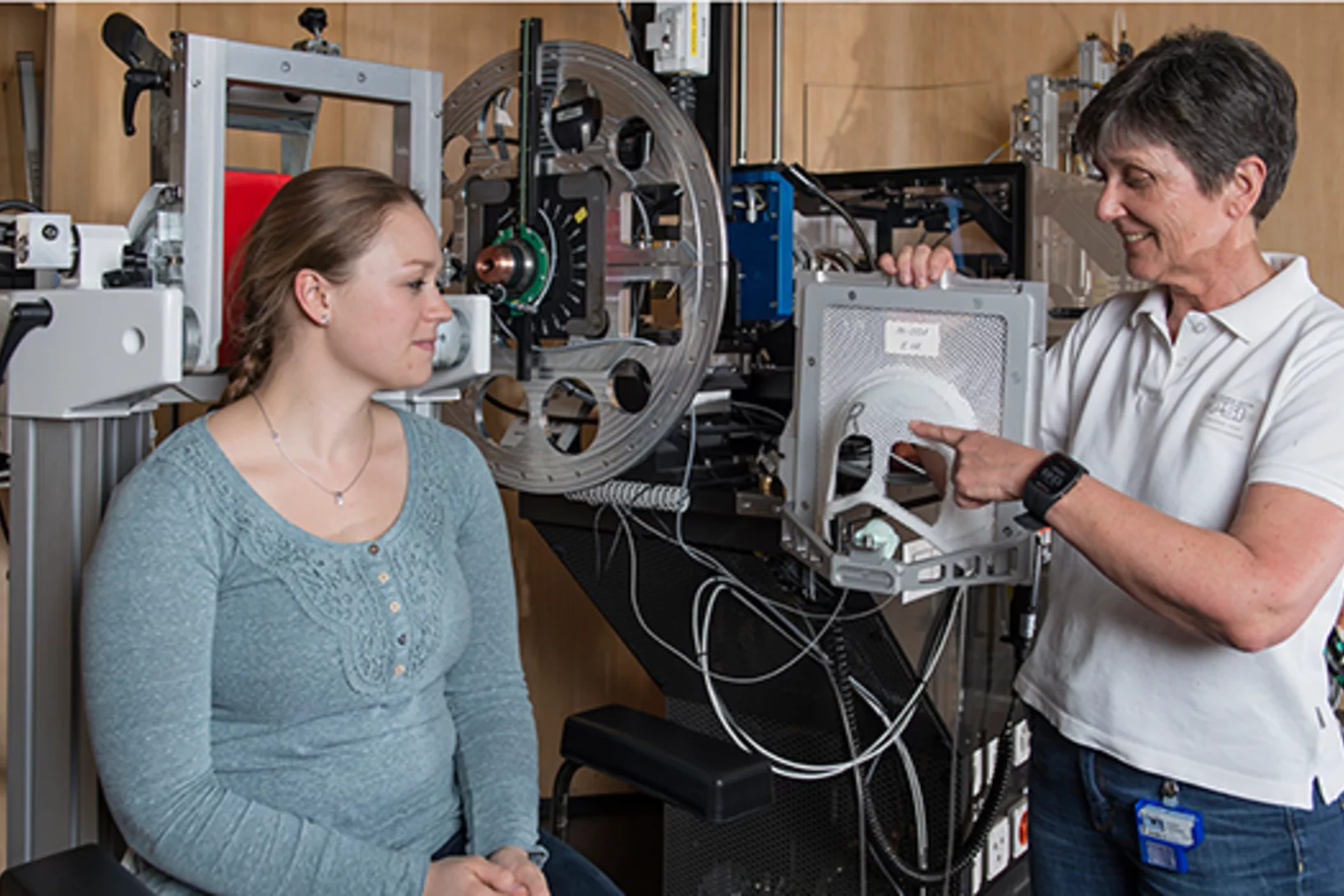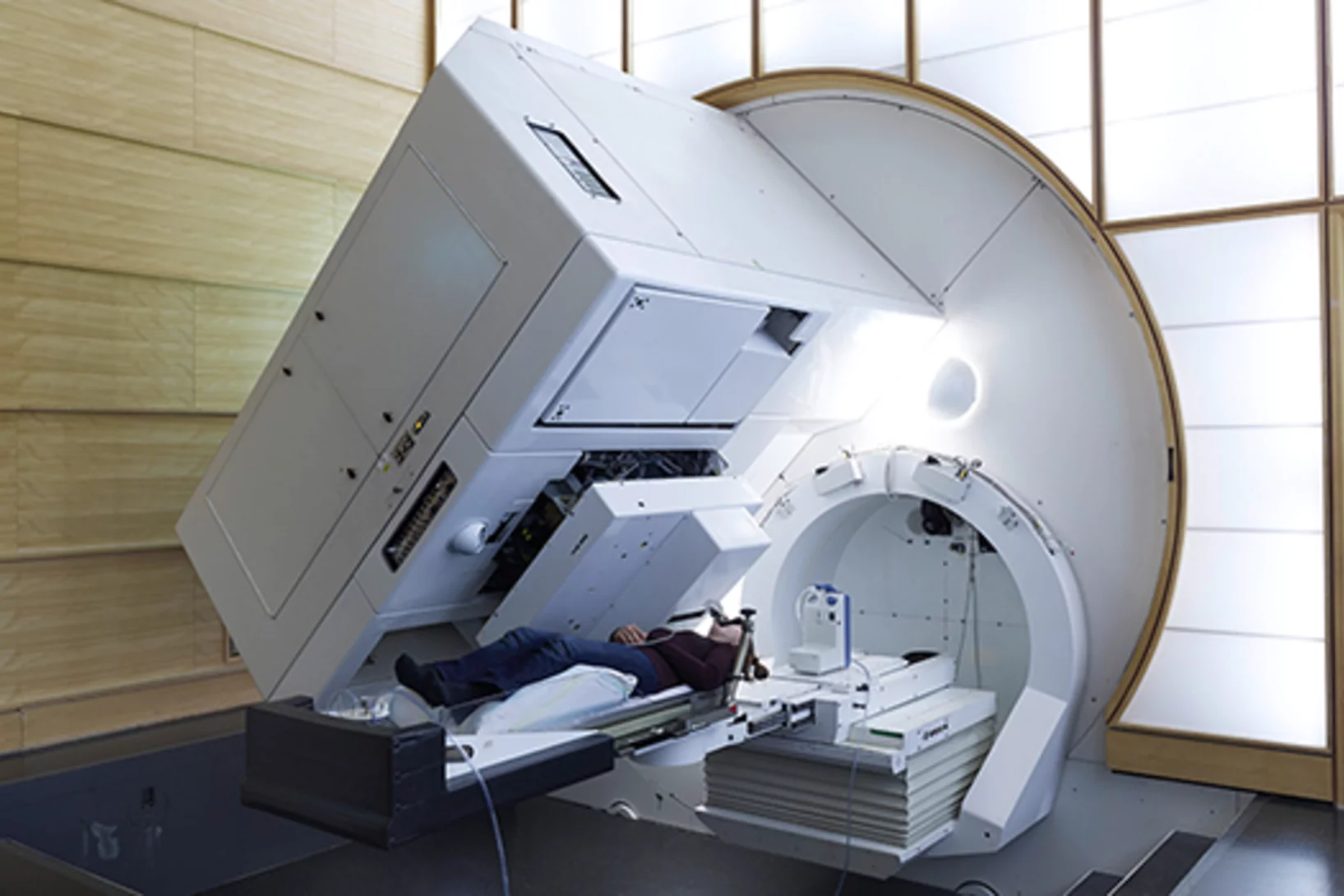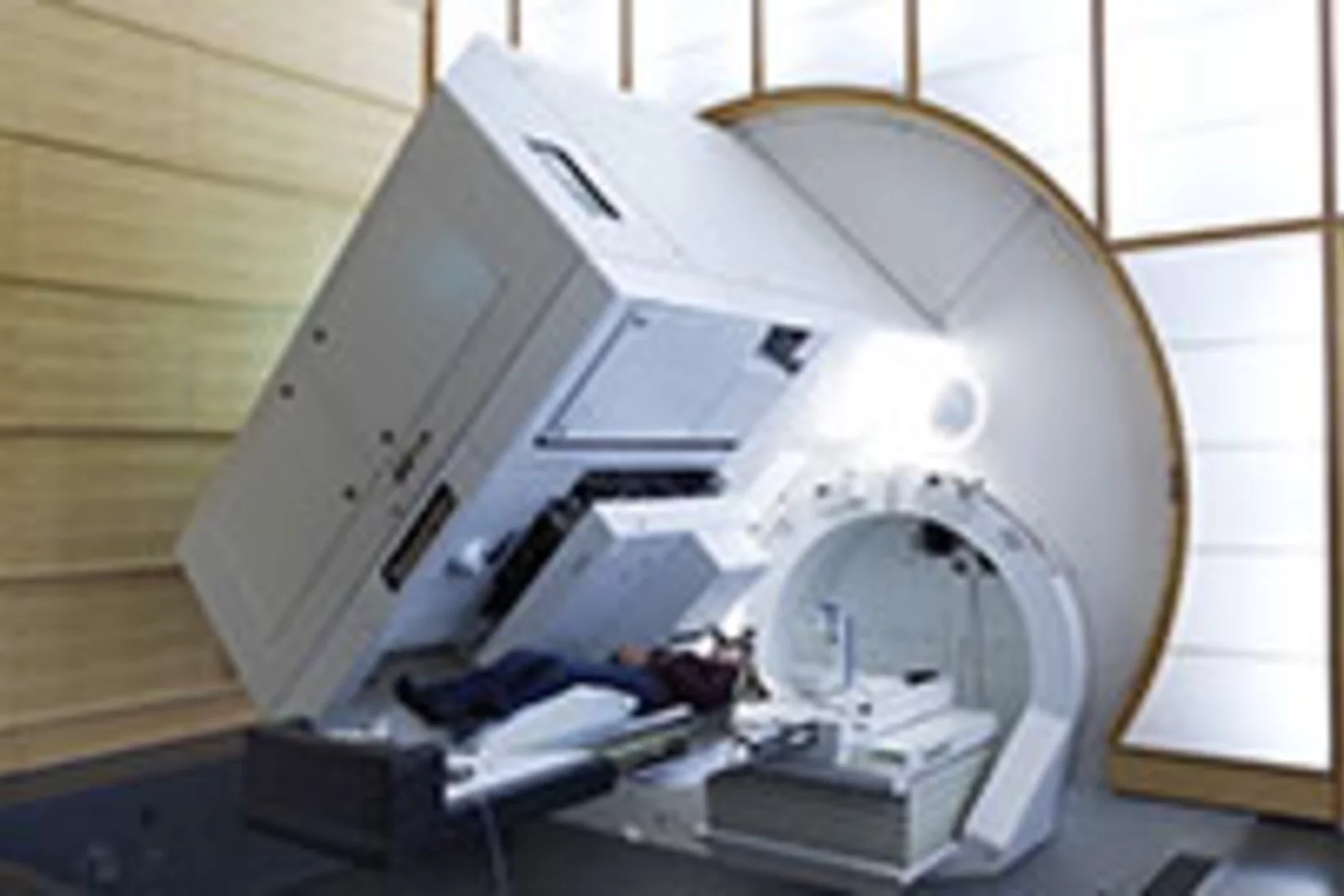Tumour irradiation, individualised daily
A PSI feasibility study shows: Even in everyday clinical practice, treatment can be adapted daily. Thus, the tumour will always be treated with exactly the right dose of radiation.
Joining forces to cure children
The close collaboration between PSI and the University Children’s Hospital Zurich for the benefit of children with cancer began 20 years ago.
A 40-year success story: Protons against eye cancer
In March 1984, people were irradiated at PSI for the first time against a rare but very malignant type of cancer: They had a tumour in their eye.
A Swiss premiere Proton radiotherapy to treat oesophageal cancer
On 15 August 2023 a patient suffering from oesophageal cancer was treated with proton beam therapy at PSI – for the very first time in Switzerland.
The power of protons
This gallery presents five people who have been treated at the PSI's Center for Proton Therapy.
Proton therapy: a success story that started 25 years ago
25 November 1996: a world first for PSI’s Center for Proton Therapy in treating a cancer patient using the spot-scanning technique.
A first for Switzerland: proton therapy to treat lung cancer
On 9 November 2021 a lung cancer patient was given proton therapy at the Paul Scherrer Institute PSI for the first time in Switzerland.
"Ultimately, we aim to understand how diseases start in single cells"
Imaging and sequencing techniques combined with machine learning offer researchers countless opportunities to look inside cells with greater precision than ever before. G.V. Shivashankar, lab head at PSI, describes how such information can be used to find answers to pressing questions.
New technique for ultrafast tumour therapy
For the first time, researchers at the Centre for Proton Therapy at PSI have tested ultrafast, high-dose irradiation with protons. The new, experimental FLASH technique could revolutionise radiation therapy for cancer.
Open fire on tumours
At the treatment stations of the Centre for Proton Therapy at PSI, tumours can be precisely irradiated from any direction. An interactive graphic explains how the protons get from the source to the body in order to trigger the elimination of tumour tissue.
"It's important to keep doing research"
Proton therapy is time-consuming and more costly than conventional radiation therapy, but its accuracy in targeting tumours is unsurpassed. An interview with Damien Weber, head of the Centre for Proton Therapy at PSI.
Cancer cells under attack
At PSI, cancer patients receive a therapy that is unique in Switzerland. Bombardment with protons wipes out cancer cells – and does so more precisely than with any other form of irradiation.
Children are her passion
At PSI, Beate Timmermann built up a programme providing proton therapy for children with cancer at the same time she was raising her own son. Today she is head of the Clinic for Particle Therapy at the West German Proton Therapy Centre in Essen (WPE) and is considered one of the most accomplished experts in this field.
Opening: Advanced technology against cancer
With proton therapy, certain tumours can be irradiated with exceptional precision – while, the surrounding healthy tissue is optimally protected. In Switzerland, this kind of radiation therapy is only possible at PSI. In a joint project with the University Hospital Zurich and the University of Zurich, PSI has expanded its capacity with a state-of-the-art treatment facility: the new, 270-ton Gantry 3.
Lausanne-Villigen return
Nowhere in the world have so many ocular tumours been irradiated with protons as at PSI. But before the affected patients go to Villigen, they have to visit Lausanne: for pretreatment at the Jules Gonin Ophthalmic Hospital. The more than 30-year-long collaboration between the hospital and PSI is unique, and in most cases it saves the patient's diseased eye.
Testing the Limits for the Patients' Benefit
Proton therapy is already a success story at the Paul Scherrer Institute PSI but researchers remain dedicated to making treatment faster and safer.
Big help for small children
When small children develop cancer, the whole family is affected. Staff at the Paul Scherrer Institute PSI’s Centre for Proton Therapy combine target-oriented proton beam irradiation and a caring, warm-hearted atmosphere to help these children.
Getting a Handle on Safety
Proton beams don’t just cure cancer. They can also damage healthy tissue. To make sure that this doesn’t happen, PSI’s Centre for Proton Therapy carries out over 350 safety tests a year. The results speak for themselves: several thousand patients have undergone proton irradiation treatment here in Villigen. There’s never been an accident.
Rays of hope for patients
For over 30 years, patients with a particular form of ocular tumour have been treated at PSI by means of proton irradiation. The tiny particles hit their target with millimetre precision, without endangering other structures of the eye. The irradiation facility OPTIS, developed at the PSI Center for Proton Therapy of the PSI, is a success story, considering that for more than 90 percent of the patients treated to date, the eye could be saved.
Added value for cancer patients
At the Paul Scherrer Institute PSI, cancer patients receive a treatment that is unique in Switzerland: proton therapy. This state-of-the-art form of radiation therapy against cancer has major advantages, compared to conventional irradiation, in terms of effectiveness and side-effects. The PSI has its own Center for Proton Therapy dedicated to this special treatment. Its pioneering work has not only helped several thousand patients, but also has fundamentally changed proton therapy worldwide.
Back to life
Doctors had discovered, behind Gabi Meier’s right eye, a tumour that surrounded the optic nerve. Only at the PSI was there still one possibility to treat the tumour in such a way as to preserve neighbouring structures and the eye. A few months after the proton treatment was over, I realised that I could see more and more, she said in an interview. “Just dimly, it’s true, but I could see! That was sensational!”
20 years of high-precision combat against cancer
On 25.11.1996, at the Paul Scherrer Institute PSI, the world’s first cancer patient was treated with a new irradiation method: the so-called spot-scanning technique for proton beams. What’s special about it: The beam has its effect only at the depth where the tumour is located; healthy tissue above and below it is preserved. The method, developed by PSI researchers, was a breakthrough at the time and quickly became a successful product.
Fighting tumours with protons
Interview with Damien Charles WeberDamien Charles Weber has been the head and chief physician of the Centre for Proton Therapy, the only centre of its kind in Switzerland, since 2013. In this interview, he talks about the successes of proton therapy in cancer treatment and the objectives for the next few years in this field.


